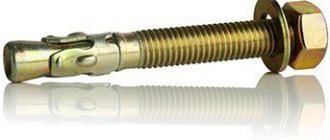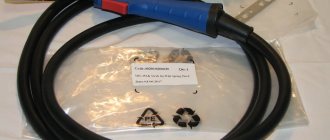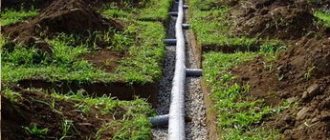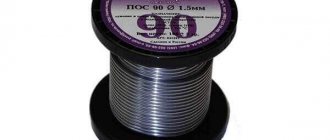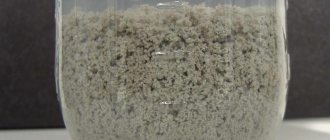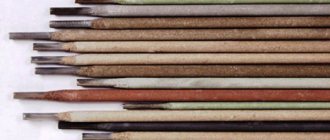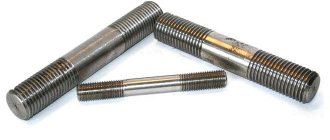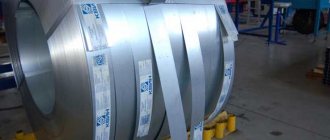How to choose the right size anchor bolt and how to navigate the markings correctly. How will the size of the anchor bolt affect the operation? These questions are heard especially often from buyers who are encountering these fasteners for the first time. When choosing them, there are several nuances, the observance of which will allow you to select an anchor bolt that ideally meets the assigned tasks. Let's try to look at them.
Why do you need an anchor bolt?
Fastening elements are designed for reliable fixation and retention of heavy objects and structures. Anchors can be installed in foundations made of brick, concrete, stone - that is, in high-strength and fracture-resistant materials. And it is the size of the anchor bolts that you should pay maximum attention to when choosing. It is important to consider 2 main parameters:
- Diameter _ It determines the maximum weight that the anchor bolt can withstand without destruction or deformation. Also, the diameter of the drilled mounting hole directly depends on its external diameter. On sale you can find anchor bolts with a diameter from 6.5 to 20 mm.
- Length . You need to choose the length taking into account the thickness of the material in which the anchor will be mounted. In this case, it is necessary to achieve maximum penetration of the anchor bolt into the base, but to exclude its exit from the other side - in this case, its reliable fixation will be impossible. From us you can buy anchor bolts with lengths from 18 to 400 mm.
It is important to consider that the length and thickness of anchor bolts are interrelated. Long fasteners are thicker and can withstand increased weight loads. To determine loads, the “kilogram/force” indicator is used, the value of which is equal to the weight of the object secured with an anchor. For example, with an anchor bolt diameter of 6.5 mm and a length of 18 mm, the permissible load on it is 800 kgf, and with a thickness of 8 mm and a length of 25 mm, it increases to 1200 kgf.
What it is?
A brick anchor is a popular type of fixing element that can be used both during construction and during repair and restoration work. This product looks like a regular construction bolt, but has design features that allow you to reliably connect all brick elements, as well as fix parts of different weights on their surface.
The fixing element must be placed in a pre-prepared hole , and during the process of deepening, a special sleeve begins to increase, which creates the maximum level of adhesion between the object and the wall.
Manufacturers artificially increase the level of adhesion on anchors by applying special notches to them.
This is interesting: Square pipe - production and application
How to read anchor bolt markings correctly
Each fastener is accompanied by appropriate markings indicating its diameter and length. Exactly in this sequence. For example, products marked 8x25 are produced with a thickness of 8 mm and a length of 25 mm. This greatly simplifies the purchase of the anchor bolt you need, not only in price, but also in terms of parameters.
The reliability and durability of fixing objects directly depends on the correct choice of fastener sizes. It is important to remember that the diameter of the drilled hole must exactly match the thickness of the anchor. If the hole is large, it will not be able to be firmly fixed in the base, which leads to a significant reduction in the permissible weight load, and if it is insufficient, installation of the anchor will be impossible. The catalog of our online store presents a wide selection of MKT anchor bolts of various configurations, suitable for solving any problem. You will definitely find with us the fastening element of the size you need. To receive professional advice and help in choosing, you can always contact the specialists of our company.
Types of fastening systems
A chemical dowel or anchor is most often used for installation in hollow bricks. The peculiarity of this type of fastener is its high resistance to the negative effects of alkalis and water.
Each type of fastener is used in a specific situation.
To attach various objects to walls made of brick and aerated concrete, several types of anchors are used. The difference between fasteners is their size and technical parameters. Each type of anchor corresponds to specific tasks. When choosing an anchor system, it is important to take into account the specifics of the bond and the brick from which the wall is made. For example, clay brick is stronger than silicate brick, and the advantages of porous building materials include all the qualities of faucet brick and gas block. The cladding can be clinker stone masonry, and a certain type of anchor must be selected for it.
Driven type
Anchor systems of this type are considered the most common and easiest to install. They are used to fix a profile pipe or any structure on walls made of solid and slotted bricks. The peculiarity of the driven anchor is that after it is installed in the wall, the spacer part is activated, providing adhesion. Only after this, additional threaded fasteners are inserted into the sleeve using a nut, which is removed at the end of the work. Instead, a corner, hook or ring can be used.
Wedge view
Such fasteners are also suitable for fixing metal channels.
This type of masonry anchor has a special element that is wedged during installation. By expanding inside the wall, this fastener holds heavy objects. With its help, you can even fix a metal channel to the wall. Often these anchor systems have countersunk screws. It is better to use wedge anchors if you need to install through the fixed object.
MSA type fastener
The anchors are made of brass and have a special notch that improves the level of adhesion to the building material. The inner sleeve has a conical shape with a narrowing towards the base. This structure allows the anchor to expand and the device to be fixed in the wall as the bolt is screwed in. Such fasteners are used for hanging light equipment.
Chemical fasteners
This anchor is suitable for hollow and solid bricks, but when working with slotted building materials, chemical anchors are indispensable. After the necessary calculations have been made, an ampoule of polyester resin is installed in the prepared hole. Then drilling is carried out using a pin, which provides a physical and chemical method of fastening. It takes time for the compound used to harden. For slotted bricks, at least 20 minutes.
To reliably connect the components of multilayer structures with air channels and cladding, a flexible ligament anchor with wavy bends is used. Calculating the required quantity is simple: per 1 m² there are 4-5 pieces of flexible anchor connections.
Double spacer system
Such fasteners are usually used for hollow-type bricks.
An anchor or dowel for hollow bricks has a spacer sleeve in 2 places at once. This guarantees a secure fit. This type of fastener is also suitable for solid building materials, but its most popular use is for slotted bricks. If there are 2 spacers, there is a high probability that at least one of them will hit a solid part. Shows itself well in terms of breaking out.
This is interesting: Casing pipes for wells - characteristics, application features
Varieties
Anchors differ not only in size. There are design features of technical parameters. Anchor products for brick walls are divided according to their intended use. A specific type of hardware is used for certain installation work.
Important! To ensure reliable fixation of an object in a brick wall, it is recommended to take a responsible approach to the choice of anchor products.
Driven type
Allows you to secure critically heavy weights. Made from high-strength material or carbon steel. It is treated with a specialized anti-corrosion coating, which ensures an increase in service life. The product is manufactured in one piece, which increases the reliability of the fasteners. A popular type of hardware is the collet anchor.
Drivers
The anchor is driven into the brick with a hammer. Its working part becomes wedged. This way the element is securely fixed in the wall. Then the bolt or stud is screwed in.
Wedge type
The scope of application is identical to the hammer type analogue. The method of installation in a stressed and unstressed concrete plane is allowed. Refers to reliable fastening elements. Capable of withstanding high loads. Used in dry rooms.
Made from various types of steel. Differs in specific execution. On one side there is a stud with a metric thread, onto which a nut is screwed. On the other hand, there is a spacer system in the form of a coupling with an internal shank.
Wedge
MSA type
Brass products, the outer side of which is characterized by the presence of a special sleeve with a large notch. The design allows you to increase the density of fixation of fasteners in the wall cavity. The permissible intra-sleeve cross-section is in the range of 8-10 mm.
Chemical principle
The external design is a cylindrical tube. Inside there are two ingredients - organic and inorganic. Reacting with each other, they harden and provide the required degree of strength.
Chemical
Important! Chemical-type fastening structures are in high demand because their use is allowed in places with high humidity, in porous substrates. Even in such extreme conditions, they are able to hold the elements together.
The name of the hardware was given in view of the chemical principle of operation - a chemical reaction. Has no smell. It is an environmentally friendly product. Does not harm the environment and the human body.
The negative aspects of using the product include the high price and different setting times of the composition. The latter depends on the variety of adhesive mixtures.
With ring
The peculiarity of the product – the presence of a ring – ensures its scope of application. It is convenient to install suspended structures on wall and ceiling surfaces. In construction it is used for securing scaffolding. Allowed to be used for bricks with a dense internal structure - only solid ones. In porous and hollow materials, fasteners lose their effectiveness.
With ring
Double-spacer
Additionally, a spacer sleeve is provided that opens simultaneously in two places. The first spacer element does not come into contact with the solid masonry surface. The reliability of fixing the product in the wall increases. The sample shows good results in the tensile test, therefore it is used in difficult operating conditions.
Double-spacer
Installation of anchor with nut
Installation of an anchor with a nut is carried out as follows:
- The bolt is driven into the finished hole using a hammer.
- The nut is tightened with a wrench of the appropriate size; it is possible to use a washer.
It is better to carry out the work using a block to avoid damage to the fasteners. If during installation the question arises - how to remove the hardware, then this can be solved simply: just loosen the nut, and the fastener can be removed from the hole.
An anchor with a nut is used to attach thin structures to the base.
There are special features when installing various equipment suspended on vertical bases - anchors with a bracket are used.
Chemical anchor installation
Since manufacturers produce chemical anchors in cartridges or capsules, installation is carried out according to the factory instructions:
- The cartridge is placed in the gun. The hole or hole is filled with a chemical adhesive component and an anchor is installed.
- The capsule is inserted into the hole and the fasteners are tightened.
You should not check the fasteners for strength and pull-out immediately, since it takes some time for the fasteners with glue to firmly adhere to the base.
Anchor bolts for concrete are modern, reliable fasteners that will last for many years. It is only necessary to select the correct fasteners for a specific type of work and perform installation in accordance with the established procedure.
Did you manage to solve your problem using the recommendations from the article?
Yes!
45.45%
No. More answers required. I'll ask in the comments now.
38.29%
Partially. There are still questions. I'll write in the comments now.
16.25%
Voted: 363
Rules for installing anchor systems
Make a hole for the anchor using a hammer drill in drilling mode
With the advent of household hammer drills, the installation of fastening systems in the walls of buildings has become significantly simplified. The older generation remembers the pain it took to install the anchor.
Using a special metal tube (bolt), under the blows of a hammer, a hole was slowly made in the brickwork. Now such an operation takes minutes.
To correctly and safely install anchors in a brick wall, you must adhere to the following rules:
- Whenever possible, the hammer drill is used in drilling mode. Brick is a rather fragile material and can simply crack and collapse under impact load. The resulting hole will not fulfill its purpose.
- The temptation is to make the work easier for themselves, they drill holes in the cement joints of the masonry. However, this position of the anchors can lead to dire consequences. Under heavy loads, the cement crumbles and hanging objects can simply fall to the floor.
- When drilling, you need to strictly control the horizontal position of the drill. At the slightest downward inclination of the cavity, there is a risk of the anchor falling out under the influence of an increased pull-out load.
- When driving the supports with a hammer, place a spacer (wooden plank) under the anchor. This allows you to protect the stud threads from damage.
- Before installing the anchor system, you need to check the cleanliness of the surfaces of the sleeve and rod. For more information about working with an anchor bolt, watch this video:
By following these fairly simple rules, you will always be confident in the strength and reliability of the fastening of hanging furniture and other items.
How to drill a hole in a brick wall
How to attach a sink to a wall
Installation of timber walls
Wall cladding with clapboard on lathing
How and with what to fill a hole in the wall
Installation of beacons for plastering walls
When to use and how to install an anchor bolt with a hook
How to remove an anchor bolt
There are mechanical and chemical anchoring:
- Mechanical anchoring is based on the most common nut fastening - the fastener is inserted into the hole made by a drill;
- When chemically anchoring the fastener, it is additionally fixed with a hardening polymer composition. To do this you need a bottle of glue and a special gun.
Anchor bolts come with a hook, a ring, and a nut. According to their purpose, they are divided into ceiling, foundation, facade, frame, and for adjustable floors. Hook fasteners equally successfully overcome external and internal loads. It has a wide range of applications - it serves as a support for curtain wall and ceiling structures.
Installation of fasteners, as a rule, is carried out in the frame before concrete is poured into the wall, ceiling, or foundation.
In order to place an order, you just need to select a product item, indicate the required quantity and click on the “add to cart” button. Then provide your contact information, delivery address, payment method. In the capital, orders are delivered by a courier service, and in Russian cities by transport companies.
Fastening
To create reliable buildings, experts recommend strengthening structures with special fixing elements - anchors. Anchor fixing parts are simple products, the installation and fastening of which should not cause difficulties even for novice builders. Despite the simplicity of the procedure, before fastening the part, it is necessary to make a pull-out calculation and follow all the recommendations of specialists in order to securely fasten it.
Basic Rules
To obtain maximum results, experienced craftsmen recommend taking into account a number of rules and technological features during the installation of anchors. The size of the drilled hole must strictly correspond to the diameter of the fastener. Do not install small anchors in large holes.
It is strictly forbidden to install anchors at the joints between bricks that are filled with cement mortar. It is also undesirable to choose weak areas with a large number of cracks and chips for work.
To protect the thread from deformation, experts recommend avoiding direct contact of the hammer with the metal and using wooden or rubber spacers.
Before starting work, it is necessary to accurately mark the work area and determine the location of the anchor. It is strictly forbidden to drill recesses close to each other, since the structure of the brick is porous and fragile, which will certainly provoke the destruction of the structure. When carrying out insulation work, clamps can be purchased separately.
If necessary, you can carry out not only horizontal reinforcement, but also vertical reinforcement - the main thing is to avoid the appearance of even a minimal bevel.
When choosing a fixing device, experts recommend adhering to the following standards:
- the length of the sleeve should not be less than 6 cm;
- the optimal level of insertion of the rod into the wall is 9 cm;
- the recommended number of anchors per 1 m2 is 4 pcs.;
- areas near openings and at joints must be reinforced.
Incorrect selection of the size, type and material of the fixing element can provoke weakening of the structure, as well as the appearance of cracks and faults on the walls.
Special brushes, a vacuum cleaner, or any convenient means at hand will help remove debris and dust from the recess.
Technology
In order to obtain a reliable and durable design, experts recommend following the following sequence of actions:
- carrying out marking work and accurately determining the location of clamps;
- drilling a hole of the required diameter in the selected work area;
- complete cleaning of the recess from dust and foreign debris;
- installation of the fixing part;
- Fully tighten the bolt head.
An important point is that the depth of the hole should not take into account the thickness of the finishing layer, which will not allow creating the maximum level of fixation.
You can learn how to use a chemical anchor from the video below.
How to Attach an Anchor Bolt: A Reliable Anchor for Any Application
Despite its resistance to loads, installation is very simple, in three stages:
– drill a hole in the wall with a drill or hammer drill; – install a bolt in the hole; – spread out the anchor base.
This installation guarantees reliable use for any purpose and load. The anchor base will cope perfectly with any type of application.
Fastening the facing masonry to the wall
From all that has been said above, it is quite clear that when constructing lightweight masonry, the anchor for a brick wall is the brick itself. So, when it comes to ordinary masonry, no fastening elements are needed. But to fix decorative (facial) masonry to it, completely different technologies are used.
Flexible connections
In general, when performing cladding, an anchor for brickwork can be any available metal material. Many masons believe that all means are good for this.
To anchor the facing masonry, which is carried out simultaneously with the construction of the main wall, they use pieces of steel rods and strips of plaster mesh, and even manage to make improvised anchors with their own hands from scraps of aluminum profiles.
Anchoring with steel rods
Note! There are many types of anchors specially designed for fastening brick cladding, which are called flexible ties. Why flexible? Yes, because part of the anchor rod is made of flexible polymer or composite material
This makes sense: thanks to the movable connection with the load-bearing wall, when the foundation shrinks, cracks do not form on the facing masonry.
Composite rods and dowels
The most common are anchor rods and facade dowels with a flexible connection, made of basalt plastic or fiberglass. The rods are used for monolithic cladding - in cases where it is not possible to connect to a load-bearing wall.
For example, when the pattern of the facing masonry is formed only by rows of spoons. The rod anchors, which are shown in the picture below, can also be used when constructing a decorative wall with a ventilation gap, but without insulation.
Brick anchor: fiberglass rods for monolithic cladding
Anchors in the form of a facade dowel with a flexible connection, which you see in the photo below, are equipped with a spacer washer. They allow you not only to connect two walls together, but also to simultaneously fix the heat-insulating boards. Therefore, they are used to connect three-layer insulated walls, while simultaneously serving as disc-shaped dowels for insulation.
Basalt plastic anchor rods
This concludes all the differences between rods and dowels. All of them can withstand prolonged exposure to high temperatures and are extremely durable. By the way, in this indicator, basalt plastic is even ahead of steel.
It is also important that it has a low thermal conductivity coefficient, and reduces to zero the possibility of the formation of cold bridges. This is precisely the main disadvantage of metal rods, since they accumulate condensation and succumb to corrosion, which leads to breaking of bonds
Perhaps someone will think that since the rod is flexible, it can be easily pulled out of the wall. However, this is not at all true. The force that needs to be applied for this corresponds to 408 kgf (4000 Newton). Such an impact only occurs during an earthquake, but when the walls themselves collapse, it is unlikely that anyone will worry about the cladding.
- The diameter of the anchor sleeve intended for brick walls is usually 6 mm. The length varies significantly, which, in fact, determines the price of the product: from 6 to 14 rubles. a piece.
- The length of the dowel is selected so that it fits into the facing brickwork by at least 9 cm (three-quarters of the width of the brick).
- Its anchor part is always 6 cm. Clamps for insulation are sold separately and purchased as needed.
- There are also options for flexible connections for attaching brick cladding to other types of foundations: monolithic, cellular concrete. The exact number of connections is determined by calculation, and depends on the presence or absence of insulation in the wall pie.
- Its type also matters. For example, mineral wool needs to be fixed more often than polystyrene foam. But on average, the consumption of composite anchors is 4 pieces per 1 m2. Additionally, they are installed at corners, around openings, in places where expansion joints are located, and the fastening spacing is no more than 300 mm.
Fixing brick cladding to a concrete wall
What else are flexible anchors good for when building a brick wall with brick cladding? Because they allow you to connect two walls even when the horizontal joints of the masonry do not coincide.
A flexible connection can also be placed in a vertical seam, which cannot be done in any other case. To prevent the fastenings from loosening, before attaching the brick anchors, install the thermal insulation with glue, and then, stitching it through, install flexible connections.
What is an anchor bolt with a hook at the end?
Push-in fittings: types, design, areas of application, installation features
This is a type that builders call anchor fasteners. The anchor expansion system is a bolt that fits into a sleeve. When screwing in, the coupling deforms. The connection strength of the connector is ensured by three forces:
- embedding (gluing) – creating shear stress when the anchor bolt comes into contact with the monolith;
- friction occurs as a result of contact of the connector with the base, this effect is provided by a metal collet or plastic dowel, which transfers the resulting load directly to the fastener;
- the thrust force acts at the very depth of the anchorage as a result of the pressure of the surrounding monolithic material. This is, in essence, the resistance of the supporting material to fracture and collapse.
When choosing an anchor, you should take into account that its fastening may be damaged under the influence of destructive forces:
- shear as a result of force breaking the part;
- partial or complete tearout while maintaining the integrity of the fastener;
- material pullout occurs when the fastener is stronger than the base;
- plastic bending of fasteners;
- corrosion destroys fasteners that are not designed to protect against moisture.
Please note the design differences; it can be with a single or double spacer sleeve. The latter provides more reliable contact with the base.
Anchor system design
The device consists of a rod and a spacer sleeve
The principle of operation of the system is the same as that of dowels. The system consists of two parts: a support rod (bolt) and a spacer sleeve. Anchors for brick walls are made in various lengths and diameters, that is, a certain type of fastener is selected for each load value.
To install supports in brickwork, you need the following tool:
- perforator;
- brick drills;
- hammer;
- spanners;
- brush for cleaning holes.
Design features and materials of manufacture
An anchor, the upper part of the threaded rod of which is a hook, can be made of various materials, depending on the purpose, the level of perceived load and operating conditions. Such materials, in particular, are:
- ordinary steel, not subjected to any additional processing;
- steel, the products from which are galvanically coated with a layer of zinc, which reliably protects them from the occurrence and development of corrosion processes;
- stainless steel grades A1–A3 (anchor bolts made of this material are distinguished not only by their exceptional resistance to negative environmental factors, but also by their high strength);
- brass (this metal, in which the “strength-ductility” ratio is optimally maintained, is practically not subject to the occurrence and development of corrosion processes, therefore anchor bolts are made from it, intended for use in conditions of high humidity and even under water).
Technical Parameters of Hook Anchor Bolts
Anchor bolts of this type, if they have a simple rather than double-spacer design, can be used for installation only in materials with a dense structure; only in such cases do they show their effectiveness. Using anchors with a hook, in particular, they install heating radiators, lamps and chandeliers, water heaters, sports equipment, self-supporting insulated cables (SIP), ropes, cables, etc.
Structurally, the anchor, the upper part of which is crowned with a hook, consists of the following elements:
- a spacer sleeve, which, expanding in the mounting hole, ensures reliable installation;
- a threaded element, which is a pin with a hook in the upper part;
- nut, which is rigidly connected to the threaded element and ensures ease of screwing it.
Anchor bolt device with hook
The principle of operation of the anchor hook is almost the same as that of any other type of anchor: when the nut connected to the stud is rotated, the threaded element with a conical tip begins to screw into the spacer sleeve, releasing it. Thus, the spacer sleeve, increasing in diameter, comes into tight engagement with the walls of the hole and is securely fixed in it.
Sequence of installation of an anchor with a hook
Expansion anchors
Expansion anchors are more often used for fastening heavy structures (metal doors). These are metal cylindrical bushings with grooves on the body. When the nut is tightened with a wrench, the bushing expands over the entire surface and rests closely against the base material.
The advantage of these anchors is their ability to withstand heavy loads in the perpendicular and longitudinal directions.
